Each of the 50 states, the District of Columbia, Office of Overseas Schools, and the U.S. Department of Defense Education Activity will select one assistant principal to represent their state. State winners are selected from applications submitted to the state associations.
Because each state’s selection process varies, please contact your state association for more information on their selection process.
2021 State Assistant Principals of the Year
| State | Name | School |
|---|---|---|
| Alabama | Harland Glass | Wetumpka High School |
| Alaska | Clarice Louden-Mingo | Lathrop High School |
| Arizona | Mario Balderrama | Vail Academy & High School |
| Arkansas | Chelsea Jennings | Lakeside Junior High |
| California | Alexander Senar | Royal Oak Middle School |
| Colorado | Donald Kotnik | Mountain View High School |
| Florida | Pamela Hixson-Wells | Fort Walton Beach High School |
| Georgia | Josh Lowe | Forsyth Central High School |
| Hawaii | Jacob Kardash | Mililani Middle School |
| Idaho | Kelly Fossceco | Boise High School |
| Indiana | Jonathan Guthrie | North Montgomery High School |
| Iowa | Danny Phipps | Mason City High School |
| Kentucky | Katie DeSimone | Madison Central High School |
| Maine | Megan Hayes Teague | Mt. Ararat Middle School |
| Maryland | Raymona Reid | Oakland Mills High School |
| Massachusetts | Jessica Beattie | Robert Adams Middle School |
| Michigan | Haley Street | Holly Middle School |
| Minnesota | Angela Charboneau-Folch | Big Lake High School |
| Mississippi | Syl Burrell | Germantown High School |
| Missouri | Katherine Lydon | Maryville Middle School |
| Montana | Tyson Tucker | Corvallis High School |
| Nevada | Todd Nelson | Bonanza High School |
| New Jersey | Emily Bonilla | Donald M. Payne Sr. School of Technology |
| New Mexico | Ervin Trujillo | Piedra Vista High School |
| New York | Anthony Lazzaro | Port Jervis Middle School |
| North Carolina | Chrissy Rotan | Concord High School |
| North Dakota | Dale Miller | Ronald N. Davies High School |
| Ohio | Ryan Bandiera | Chardon High School |
| Oklahoma | Jennifer Patterson | Waller Middle School |
| Oregon | La’Shawanta Spears-Hardy | Alice Ott Middle School |
| Pennsylvania | Kimberly Fitzgerald | Knoch Middle School |
| Rhode Island | Amanda Grundel | Ponaganset High School |
| South Carolina | Brandon Ross | Ridge View High School |
| South Dakota | Joseph Williams | Sturgis Brown High School |
| Tennessee | Greg English | Tullahoma City Schools |
| Texas | Danielle Jackson | Thurgood Marshall High School |
| Utah | Heather Gerrard | Ogden High School |
| Virginia | Austin (Donnie) Norman, II | Jefferson Forest High School |
| Wisconsin | Kari Strebig | Rhinelander High School |
| Wyoming | Nicholas Lamp | Cheyene Central High School |
Alabama
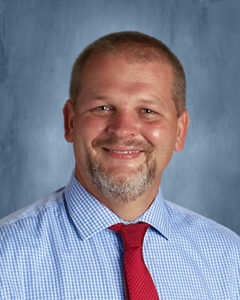
Harland Glass
Wetumpka High School
Wetumpka, AL
Grades: 9–12
Students: 1,167
Region: Suburban
While at Wetumpka High School, my goal has been to build positive relationships with students, faculty, and staff. I try to find the positive in all situations. As the AP coordinator, the program saw substantial growth in participation and students with qualifying scores. In 2016, the percentage of students with qualifying scores was 21.7 and has grown to 53.4 in 2020. The percent of qualifying scores on exams increased from 18 to 37 from 2016 to 2020. I credit the success of the AP program on being a motivational force for the teachers and students. Showing excitement and being involved provides motivation to the teachers and students to improve each year. By simply caring and listening, the program is moving forward and continues to grow in positive ways.
Alaska
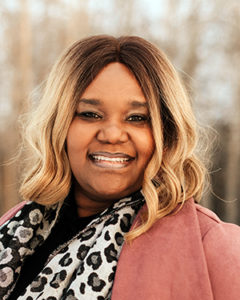
Clarice Louden-Mingo
Lathrop High School
Fairbanks, AK
Grades: 9–12
Students: 819
Region: Urban
In my role as assistant principal, I have embraced the why of building culture and the importance of building relationships within the school community. I constantly remind myself of what Maya Angelou once said: “People will forget what you said, people will forget what you did, but people will never forget how you made them feel.” For me, I have worked hard to ensure that students feel welcomed in our building and that they are seen. Having an activity such as the invisible child museum allows staff an opportunity to truly reflect on their connectedness with students and ways that they can enhance the building culture to determine the why of the school.
Arizona
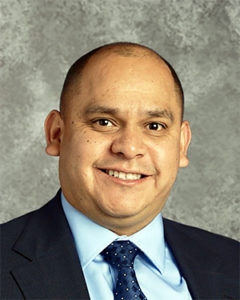
Mario Balderrama
Vail Academy & High School
Tucson, AZ
Grades: K–12
Students: 412
Region: Urban
Throughout my career, I pride myself on being reflective. During the application process for a statewide A+ School of Excellence Award, our leadership team collaborated to document our best practices and examined the essential elements of our school culture. We highlighted the instructional and value-based components of what makes us an effective school. As part of the process, we met with a team of judges who reviewed our application and visited our campus to validate what we were doing as a learning community. This evaluation allowed me to self-reflect and ask, “How does my role as an assistant principal impact student achievement and the culture of our campus?” This reshaped my ability to build upon existing programs and create a learning agenda of items that I wanted to strengthen and help implement on our campus.
Arkansas
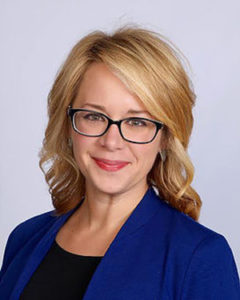
Chelsea Jennings
Lakeside Junior High
Springdale, AR
Grades: 8–9
Students: 685
Region: Suburban
While serving as an assistant principal, I volunteered to lead the district’s Alternative Learning Environment (ALE) in our building. Students in the program exhibit multiple risk factors, including low achievement, chronic absenteeism, discipline issues, or difficult home lives. We researched successful ALEs in surrounding communities, facilitated book studies on social-emotional learning, and hosted an institute on trauma-responsive discipline. By restructuring and advocating for resources, we expanded to a multidisciplinary team of six teachers and a mental health therapist, social worker, and bilingual parent liaison. We met with parents and students to create individualized academic and behavior goals and partnered with a local nonprofit on a peer leadership program. By year two, we had doubled involvement in school-based counseling, cut discipline referrals in half, and established an inclusive model for transitioning students into mainstream classes.
California
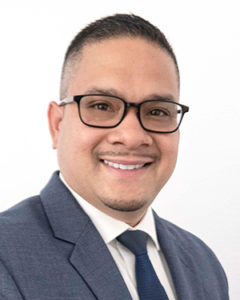
Alexander Senar
Royal Oak Middle School
Covina, CA
Grades: 7–8
Students: 696
Region: Urban
Building a strong school culture is paramount in any school—and that cohesiveness is built through relationships. As a school leader, creating and keeping these relationships in good health is my responsibility. At the start of my time at Royal Oak, it was brought to my attention that there were a significant number of elementary parents worried about transitioning their kids into our middle level school. I personally saw this as an opportunity to build relationships and rewrite the narrative. Immediately, I joined our district’s executive PTA board to participate in monthly meetings with PTA presidents from all our elementary schools. Using these meetings as an influential platform not only empowered me to transform the perspectives of parents and students and what they thought about our school, it further allowed me to nurture essential relationships.
Colorado
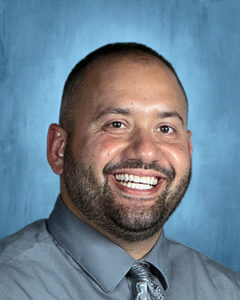
Donald Kotnik
Mountain View High School
Loveland, CO
Grades: 9–12
Students: 1,166
Region: Suburban
In 2019, I led the effort to implement a freshmen academy program at Mountain View High School. Freshman Academy supports academics and social-emotional learning with data-driven initiatives such as freshmen-only lunch, weekly after-school tutoring, smaller class sizes, and a dedicated freshmen counselor, among other strategies. The two most impactful changes required collaboration and innovation: Our “Lion Launch” summer transition program focuses on educating students about the rigor of high school, developing relationships, and molding a mindset of high expectations; and a freshman seminar course creates community, explores identity, and holds students accountable. In just two years, Freshman Academy has transformed the culture of our building. There is more empathy, confidence, and school spirit. Students and staff work together to build a safe and inclusive environment where everyone’s needs are met.
Florida
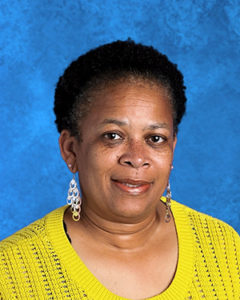
Pamela Hixson-Wells
Fort Walton Beach High School
Fort Walton Beach, FL
Grades: 9–12
Students: 1,892
Region: Suburban
A few years ago, I attended College Board’s A Dream Deferred Conference. Since the conference, I have sought to increase the opportunities for all students, but especially minority students to ensure access and maximize success in AP classes. It was important for the students to know that their dreams and goals were worthwhile and attainable. I implemented an enrichment program to help prepare students for their AP classes and to increase camaraderie amongst all students. Meetings were held with parents and students prior to starting the program to provide advantages of taking AP classes and tools for college readiness and preparedness. One of the happiest moments of my educational career was when an AP-ready student shared the impact that I made on her self-confidence and goal accomplishments because of my belief in her abilities.
Georgia
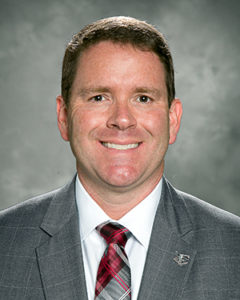
Josh Lowe
Forsyth Central High School
Cumming, GA
Grades: 9–12
Students: 2,557
Region: Suburban
To support the overall school culture and continue our school’s wellness initiative, I was asked three years ago to lead a team to implement the Positive Behavioral Intervention and Supports (PBIS) framework and curriculum at Forsyth Central High School. This also allowed us to become the high school pilot for our district. We worked to utilize PBIS as an umbrella for several things our school was already doing in an effort to maintain positive relationships and ensure staff commitment. To date, we have led professional learning to fully implement Tier I of the curriculum and are planning to begin implementing Tier II next year. Our efforts have also been recognized by being selected to present our progress at the Georgia Association for Positive Behavior Support Conference in both 2018 and 2020.
Hawaii
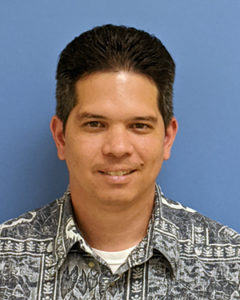
Jacob Kardash
Mililani Middle School
Mililani, HI
Grades: 6–8
Students: 1,886
Region: Suburban
I am fortunate to be in a position where I can further strengthen connections and collaborate with dedicated professionals who have the same goal. Over the last five years, I have established an international partnership with several public and private schools throughout Japan. As we host our Japanese sister schools, students can connect with different cultures and develop their global perspective. Teachers and administrators from both schools engage in multicultural discussions and share educational philosophies. The partnership has recently expanded, and now Mililani students can visit our sister schools in Japan. This once-in-a-lifetime opportunity immerses our students in another culture. I am grateful for the continued support from my colleagues and our partnership with Hawaii Global Education Foundation, a nonprofit organization dedicated to strengthening this unique connection.
Idaho
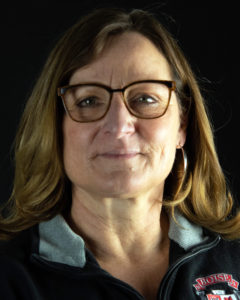
Kelly Fossceco
Boise High School
Boise, ID
Grades: 10–12
Students: 1,457
Region: Urban
What has touched me the most during the year, as an administrator, is the collaboration of Boise High School teachers, staff, administrative team members, and our Boise High community. The commitment to providing the best education possible has been overwhelming, and it’s been a privilege to be part of this group. At Boise High School and the Boise School District, we have devoted ourselves to collaboratively working our way through the following challenges: developing a curriculum for online learning and providing students with necessary technology and materials for success, developing a comprehensive plan for a return to in-person learning, implementation of safety protocols at school and school activities, and many more. I am honored, humbled, and in awe of what I see and do with our staff every day to educate our youth.
Indiana
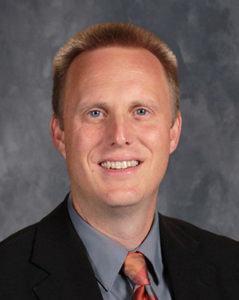
Jonathan Guthrie
North Montgomery High School
Crawfordsville, IN
Grades: 9–12
Students: 511
Region: Rural
North Montgomery High School is in their fourth year of implementing the Applied Educational Neuroscience framework, which seeks to build a culture of care throughout the school with four interwoven approaches. There is a focus on educator brain state, purposefully building attachment and providing positive touchpoints, co-regulation, and teaching students about their neuroanatomy. This has been spearheaded with my principal and director of student services as we have created professional development for our staff to learn about the science of our brains and how to sit alongside our students and co-regulate. Thus far, I have created two separate years of neuroscience curriculum for our students to learn in their advisory period. This work has reduced the number of students kicked out of class, increased student emotional safety and regulation, and decreased teacher turnover.
Iowa
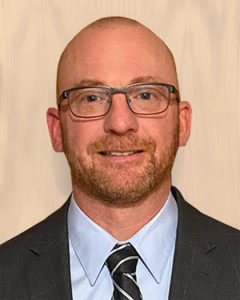
Danny Phipps
Mason City High School
Mason City, IA
Grades: 9–12
Students: 1,010
Region: Urban
Going through this pandemic has shown us at Mason City High School that we have strong staff members who truly care about each other and the students they teach. The relationships among all staff members have shown a new level of trust with each other. As an administration team, we have had to reflect on the normal things we do by increasing our compassion to staff members by being more approachable; accessible at all times of the day and night; and welcoming to students, families, and stakeholders. The one thing I am most proud of as a leader is the resilience of our staff. They have shown the capacity to recover quickly with great flexibility during these difficult times.
Kentucky
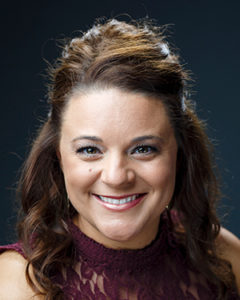
Katie DeSimone
Madison Central High School
Richmond, KY
Grades: 9–12
Students: 1,990
Region: Urban
Building culture at school is imperative for success. Faculty, staff, and students thrive in an environment where they are challenged, celebrated, and loved. Throughout administrative changes, I have been the unwavering support for the new principal and my teachers. I strive to model the behavior I want to see in my peers and believe in servant leadership and in making every person feel valued and respected. My biggest success is overcoming the challenge of being a widowed young mother at 30. Every day since, I get up, I come to work, and I share my journey. I believe I have been able to lead through example by being a light of encouragement to anyone going through a tough time. My positivity and perspective not only influence my school but my community at large. I believe if good can come from tragedy, good can come from anything and anyone.
Maine
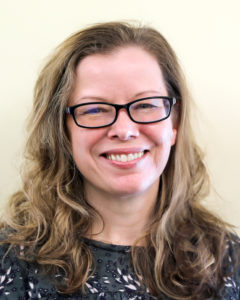
Megan Hayes Teague
Mt. Ararat Middle School
Topsham, ME
Grades: 6–8
Students: 573
Region: Suburban
Using our mission as a guide, I have improved school culture through a reconstruction of our school’s responses to challenging behaviors. This process began four years ago with data collection on current practices. After presenting statistics around our school’s most frequent responses to behavior, student survey data, and feedback from staff surveys, I invited teachers to join a committee to research best practices in relationship-based and restorative approaches to challenging student behavior. Together, we have participated in book studies, hosted guest speakers, and provided professional development. While it can be challenging to maintain the commitment to continuous improvement, I have collected data indicating that staff support our work. Over time, staff support for behavior response has more than doubled, and students report improved relationships with their teachers.
Maryland
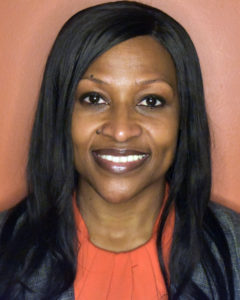
Raymona Reid
Oakland Mills High School
Columbia, MD
Grades: 9–12
Students: 1,288
Region: Suburban
Although I miss the classroom, I realized that as an administrator I could serve students in a capacity that influences change. During my journey, I have developed several programs that provide opportunities for aspiring leaders. My latest initiative is called “OM BREATHE” and provides the following opportunities: a safe space for courageous conversations, staff dialogue concentrating on social injustice and culture, and self-reflection exercises to begin to understand and grow through personal implicit biases. In addition, it has provided dialogue around equity in learning and increasing academic achievement in students of color to close opportunity gaps. Developing strong relationships and finding ways to help others achieve success is the foundation of everything I do.
Massachusetts
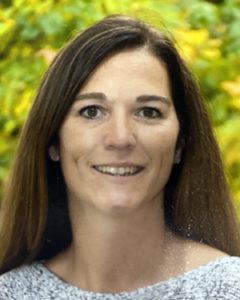
Jessica Beattie
Robert Adams Middle School
Holliston, MA
Grades: 6–8
Students: 690
Region: Suburban
When I reflect on my success as an educational leader at Robert Adams Middle School, I am most proud of our collaborative work in leading learning. We have chosen to center the focus of our school around global citizenship, personal reflection, well-being, and empathy for the perspectives of others, which required a mindset shift that we branded as Personal Local Global (PLG). Through PLG, we have been able to provide students a variety of unique and authentic learning opportunities. Our staff is committed to embedding United Nations sustainable goals, project-based learning, diversity, and social-emotional learning into the design of lessons. These creative lessons have provided students the opportunity to become activists while refining their problem-solving and collaboration skills.
Michigan
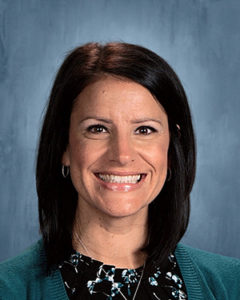
Haley Street
Holly Middle School
Holly, MI
Grades: 6–8
Students: 696
Region: Rural
Positive and mutually respectful relationships are at the center of all we do at Holly Middle School. By adopting a restorative approach over the past three years, we continue to create a school that both staff and students want to be part of each day. When challenges come, we seek to repair relationships, address responsibility, and reintegrate quickly into our regular learning routines. We find that simple hallway conversations and engagement in restorative conferencing creates opportunities for both staff and students to communicate their feelings and reach mutual agreements, along with offering time to make things right with each other. We’re seeing that as we give students voice and choice, we create classroom communities that thrive.
Minnesota
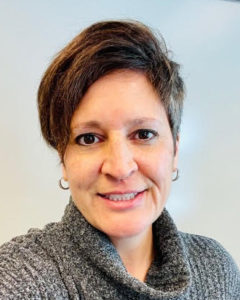
Angela Charboneau-Folch
Big Lake High School
Big Lake, MN
Grades: 9–12
Students: 926
Region: Suburban
I believe the foundation to learning is fostering positive relationships with all students. For the past 10 years at Big Lake High School, I have focused on the essential work of building a safe school culture centered on relationships. Throughout my career, students have made a huge difference in my life. In one success story related to school leadership, I asked teachers to take a few minutes to tell a student that they were part of the reason we come to work each day. The result of this relationship challenge turned into a video that we shared with the community. Unexpectedly, the story was then picked up by the local news and went viral. The success part, however, was the genuine heartfelt message from the teachers and watching the students’ reactions.
Mississippi
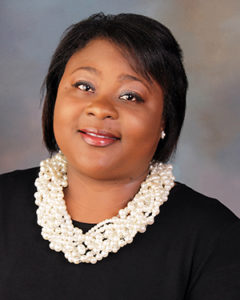
Syl Burrell
Germantown High School
Madison, MS
Grades: 9–12
Students: 1,284
Region: Suburban
As a school leader, I report and review data by subgroups. However, I work hard at fostering an inclusive environment so our students never realize such groupings. One heartwarming example—that is now a tradition—was experienced during a pep rally when a senior student led the student body in a chant of “Su-per Mavs! Su-per Mavs,” referring to our self-contained students; our school mascot is a Maverick. From that moment, I worked to establish student mentors that would volunteer during life skill activities with the self-contained class. The district supported the vision and constructed a full-size kitchen and laundry room. No one envisioned that a senior scholarship would be birthed from those mentorship experiences, but it was. It is still funded through a Friday café that serves the best cookies and punch, where the Super Mavs are the sole proprietors.
Missouri
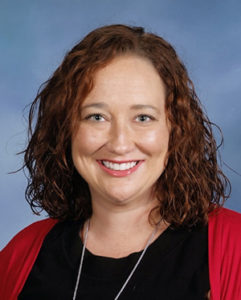
Katherine Lydon
Maryville Middle School
Maryville, MO
Grades: 5–8
Students: 469
Region: Rural
When I began my career with the Maryville R-II School District, the district initiated an update to the K–12 curriculum. Because of my experience writing curriculum and my drive to lead learning, I spearheaded the research and development of a district template and curriculum writing process based off Larry Ainsworth’s “Rigorous Curriculum Design.” Now each content area has a living document written, monitored, and adapted by the classroom professionals who deliver the instruction. One success has been the updated math curriculum. I led K–8 math teachers through the process of selecting and implementing a new math curriculum utilizing curriculum associates. The number of students showing grade-level proficiency has greatly increased during the last three years.
Montana
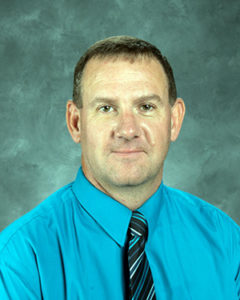
Tyson Tucker
Corvallis High School
Corvallis, MT
Grades: 9–12
Students: 483
Region: Rural
One area that we focus on at Corvallis High School is building school culture. In addition to being the assistant principal, I am also the activities director. One of our goals is to make sure that we get students involved with a sport or club when they enter high school. The more that kids are involved with something, the more ownership they will take and the more opportunities they will have to create positive relationships. At the beginning of each year, we dedicate the first day of school to the freshman only. They learn how to navigate the campus, find classrooms, and meet teachers without the distraction of upperclassmen. As part of this, I have our student council address the freshman class, sharing the many ways they can become involved in their school through activities, clubs, and sports.
Nevada
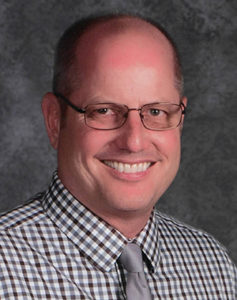
Todd Nelson
Bonanza High School
Las Vegas, NV
Grades: 9–12
Students: 2,108
Region: Urban
There are three things we focus on at Bonanza High School (BHS). We call it the BHS Culture Blueprint. It states that as members of this school community, everyone should 1) Give their best effort each and every day; 2) Be willing to grow; and 3) Be nice to one another. My top priority is to support teachers to improve their teaching practices to ensure they can make a difference. My second priority is to always seek ways to grow. Finally, I strive to be nice to each person every day, or “See the greatness in others.” As an outcome of our BHS Culture Blueprint, we have seen a higher graduation rate, lower student failure rate, stronger departments, increased collaboration, increased school spirit, better community involvement, stronger teacher-student relationships, and a stronger commitment to one another through relationships of trust, vision, and habits.
New Jersey
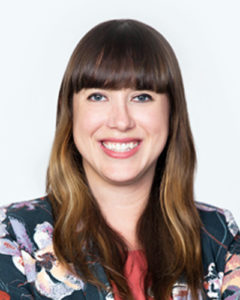
Emily Bonilla
Donald M. Payne Sr. School of Technology
Newark, NJ
Grades: 9–12
Students: 1,288
Region: Urban
When we moved to virtual learning, I quickly formed a virtual culture committee to ensure students still felt like a Payne Tech Lion. I have spearheaded a positive behavioral interventions and supports-modeled attendance initiative reducing our chronic absenteeism rate to under 5 percent. During remote and hybrid learning, our daily absence rate is under 2 percent. I obtained a grant for all of our students to be part of virtual workshops with teaching artists of color from around the country to develop and create original theatrical and song pieces rooted in social justice/identity that later will be screened for a virtual audience—providing our students not only a new engaging way of learning, but also a way to release stress and anxiety.
New Mexico
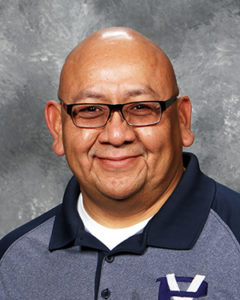
Ervin Trujillo
Piedra Vista High School
Farmington, NM
Grades: 9–12
Students: 1,417
Region: Rural
As a school leader, I worked with at-risk students in developing a plan that would meet their individualized needs so they can receive a high-quality education at Piedra Vista High School. I was able to conference with them at least once a week to review grades, check their emotional needs, and build trust and rapport. I wanted them to be successful not just in high school, but to develop the skills they need to be successful in a global society. After I built a rapport with the students, they were able to trust and share their struggles, emotional and social needs, and fears. I was able to use the school, district, and local resources to help them. My door is always open for students to talk when they need it.
New York
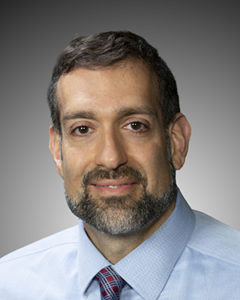
Anthony Lazzaro
Port Jervis Middle School
Port Jervis, NY
Grades: 7–8
Students: 375
Region: Urban
Our school vision began with the focus of providing space for students to find their voices and have opportunities to engage actively in the curriculum. We collected data from walk-throughs that made it clear students were compliant, but not necessarily engaged. Our plan for professional development began with simple checks for understanding such as providing students with green, yellow, and red cards; these cards allowed students to reflect on and share their comprehension of the lesson. These checks for understanding gave way to more elaborate methods of student engagement that have become the norm in our building. Our walk-throughs began to show a clear shift from compliance to engagement. The current remote learning model has influenced our faculty as we look toward new methods of engagement for a virtual environment.
North Carolina
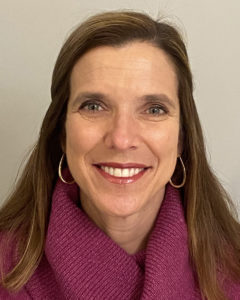
Chrissy Rotan
Concord High School
Concord, NC
Grades: 9–12
Students: 1,023
Region: Suburban
When students see a purpose for their learning, they are more committed. I led the design and implementation of the IB program at Concord High School (CHS). I also worked closely with the career development coordinator to design the Public Safety Academy. Students get hands-on experience in fire, law, EMT, and nursing and earn credentials for certification. This program supports the community, as these students will be the next generation of public servants. This year, the CHS team is again creating a program for CHS—the Academy of Hospitality and Tourism. This academy will help students experience both the “front” and “back of house” perspectives of a restaurant, hotel, or tourism venue. Students learn culinary art techniques and the business portion to run these venues.
North Dakota
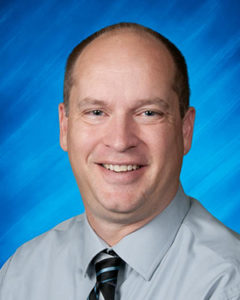
Dale Miller
Ronald N. Davies High School
Fargo, ND
Grades: 9–12
Students: 1,341
Region: Suburban
In the spring of 2012, I asked our new head principal to allow me to create a system to support all students in their academics. The plan needed to be able to address students’ individual academic needs, all the while reducing the number of failing grades at the end of each semester. I started a conversation with each of the 13 departments in the spring of 2013 to promote this idea and gather feedback on how it could work. Through diligent staff efforts and strong communication, we were able to put in place our support system for academics in the fall of 2013. It was a simple concept to start but evolved over time with input from students and teachers. In the end, each student received individualized support from certified staff. This process became part of our school’s culture.
Ohio
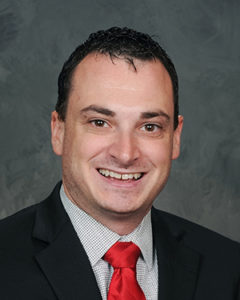
Ryan Bandiera
Chardon High School
Chardon, OH
Grades: 8–12
Students: 1,212
Region: Suburban
All students can learn, but learning does not always look the same. This is my philosophy of education. This was reaffirmed through the universal design for learning framework that I brought to Chardon High School. This framework helps teachers and students identify barriers preventing students from learning. Outstanding educators can work collaboratively with their colleagues, students, families, and community to identify those barriers and design learning that is accessible to all students. As an instructional leader at Chardon, I have helped my students and teachers break down the boundaries through simply asking the question of how information can be presented differently and in what ways can students demonstrate their learning.
Oklahoma
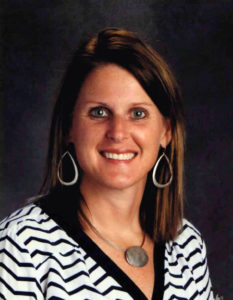
Jennifer Patterson
Waller Middle School
Enid, OK
Grades: 6–8
Students: 728
Region: Suburban
Equity for all has been a platform I have lived on my entire educational career. Throughout my years in education, I have pushed for inclusion, both in the classroom and community. One of my proudest efforts comes through a program in which I teamed with students to create the Islander Club. This club consists of a unique cultural group, the Marshallese. This group of shy and reserved students found their voice by meeting together. They began to educate others about their culture and now showcase their artistic and vocal talents within the school and community. The pride in this group ripples throughout the school as these students work hard to succeed in a global society.
Oregon
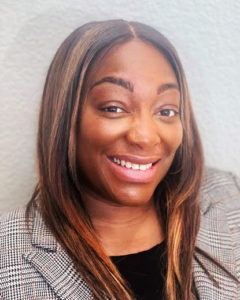
La’Shawanta Spears-Hardy
Alice Ott Middle School
Portland, OR
Grades: 6–8
Students: 717
Region: Urban
When thinking of any goal as it relates to student success, I’ve always guided my practice on a simple message: While building student relationships, create a culture that illuminates respect. Last week a staff member from four years ago sent the following message: “Today I was working on the safe school training about conflict resolution. As I listened and thought about our time at Fir Ridge, I realized what a privilege it was to work with you and to witness firsthand the benefit of conflict resolution. You were the master, your soft-spoken voice, your listening posture, and the way you always worked to make people comfortable in getting to a solution. … Thanks for being such a good example.” Those words served as a reminder that my moral compass must continue to lead with respect. I respect my students and, in return, they respect me.
Pennsylvania
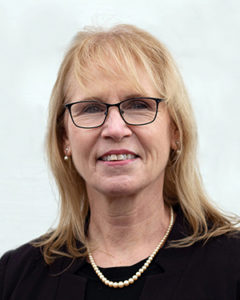
Kimberly Fitzgerald
Knoch Middle School
Saxonburg, PA
Grades: 6–8
Students: 517
Region: Rural
Sustained student achievement relies on a positive culture—one that focuses on building relationships and developing trust. To elicit this positive culture, I model positivity and empathy; exhibit a student’s first attitude; help others identify the greatness in themselves and others; practice active listening and follow through; work to increase face-to-face communication; and strive to inspire a love of continuous learning by helping others set learning goals. In short, through servant leadership, I believe I have positively impacted the school climate. I am incredibly thankful for our staff and students. During this most challenging year, staff and students stop or email me to share stories of their small victories; they provide glimmers of hope that keep us moving forward.
Rhode Island
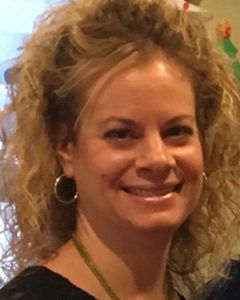
Amanda Grundel
Ponaganset High School
Glocester, RI
Grades: 9–12
Students: 938
Region: Rural
From the moment I became an assistant principal, I wanted to lead learning in a way that all teachers could benefit from. The link to every teacher is my literacy background. At the high school level, literacy is not often explicitly taught. I wanted to change this because students had difficulty accessing reading material across disciplines. I empowered the literacy specialists in the district to model their strategies, lead professional development, and create a writing lab that all students can use. We developed a literacy newsletter for the school. We became a results-oriented team and when we saw the data trending upward, we knew we were on the right track. Five years later, strong literacy practices are used across content-areas at Ponaganset High School.
South Carolina
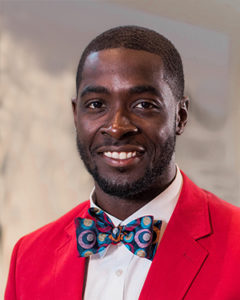
Brandon Ross
Ridge View High School
Columbia, SC
Grades: 9–12
Students: 1,662
Region: Suburban
Devoting myself to instructional leadership, I established a learning walk initiative that allowed a small group of teachers to sign up to join me and observe one of their peers. The informal observation was designed to look for evidence in an area that the observing teacher targeted for their individual growth based on prior feedback they received or through personal reflection. After a 20-minute observation, we debriefed as a team to discuss evidence that supported the indicators we were observing individually or as a group. We extended closure by meeting with the teacher who was observed to provide feedback. This learning walk initiative allowed teachers to build relationships and establish a network of educators committed to improving their practice for the benefit of the students and families we serve.
South Dakota
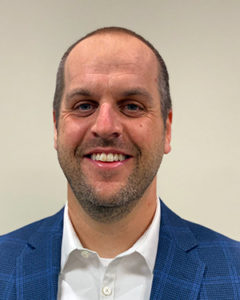
Joseph Williams
Sturgis Brown High School
Sturgis, SD
Grades: 9–12
Students: 771
Region: Rural
I entered this profession because I care for people—adults and kids alike. I feel my calling as an assistant principal is to focus on developing relationships and helping people feel appreciated and welcome. Since becoming an administrator at Sturgis Brown High School (SBHS), I have created or implemented programs to build community. These intentional programs include the following: The Care Committee, a group of teachers that develops plans to bring cheer to staff; Sam’s Closet, a place for students in need to access food and clothing; The Positive Referral program, where I recognize and reward students for going above and beyond expectations; and a Scoop It Forward program, where employees can purchase coffee for others. These ongoing initiatives have served the SBHS community even more as COVID-19 magnified the need over the last year.
Tennessee
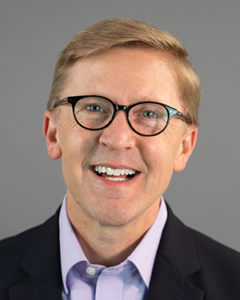
Greg English
Tullahoma City Schools
Tullahoma, TN
Grades: 9–12
Students: 1,070
Region: Suburban
When schools closed in March of 2020 due to the pandemic, we wanted a way to celebrate the class of 2020. We asked our seniors what they most wanted out of their graduation. Their nonnegotiables were for it to be at the school, in the stadium, and they wanted to be presented with their diplomas. I suggested we host a drive-around ceremony in our stadium. Students were scheduled in flights. We encouraged them to decorate their cars and caps. As each student rolled up to the stage at the 50-yard line, they walked the stage and were presented their diplomas. The entire event was streamed by our local TV station for families that couldn’t come. It was a long but amazing day. The smiles said it all.
Texas
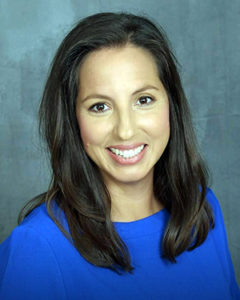
Danielle Jackson
Thurgood Marshall High School
Missouri City, TX
Grades: 9–12
Students: 1,300
Region: Suburban
Relationships, identity, and connections are key to creating an effective and equitable learning environment. I randomly surveyed our underperforming Hispanic students for their perception of school, which revealed a common theme of feeling like an outcast. I began the second semester by meeting with each department. We reviewed the data, the immigration experience, and the barriers of culture, language, and economics. We focused on the students’ lack of a positive identity at school. Staff members chose one struggling student to focus on for the second semester. We collected data about strategies implemented and barriers that still existed throughout the semester all while tracking their academic progress. Ultimately, every student surveyed at the end of the year had a better school experience in the spring than the fall.
Utah
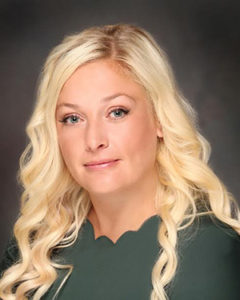
Heather Gerrard
Ogden High School
Ogden, UT
Grades: 10–12
Students: 1,100
Region: Urban
I have a passion regarding college and career readiness. I have focused on increasing our student’s access to rigorous pathways, including our minority populations. Through small shifts in teacher support, literacy professional development, PLC work, and increased community engagement, I have been able to lead our school toward increasing student participation in these programs by more than 50 percent, while ensuring that our teachers were able to support our most at-risk and diverse students’ needs for more sustainable growth. These efforts have supported an increased graduation rate of over 95 percent. At the same time, we increased our ACT composite, and our rigorous course participation increased to 87.9 percent. I am proud to say that our school is graduating more students while ensuring they are college and career ready.
Virginia
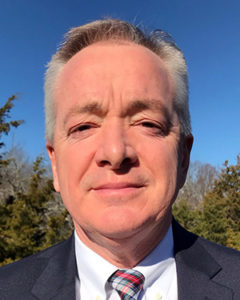
Austin (Donnie) Norman, II
Jefferson Forest High School
Forest, VA
Grades: 7–12
Students: 2,005
Region: Suburban
In 2010, I had the honor of being one of the first employees in Bedford County to teach a virtual health and physical education course. With that one course, I began what is now known as Bedford Connects—a remote virtual learning opportunity that arose out of a simple desire to do something different to provide learning opportunities that are more accessible and equitable to students. Virtual learning has become an essential foundation of education, especially during this pandemic. Students at Jefferson Forest understand remote learning because they have been given the opportunity to participate in it years before it became essential. I currently serve as an administrator leading and supporting further development and expansion of virtual learning opportunities for students.
Wisconsin
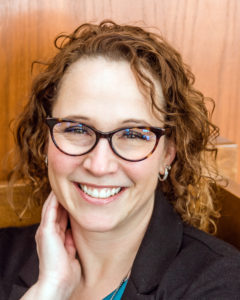
Kari Strebig
Rhinelander High School
Rhinelander, WI
Grades: 9–12
Students: 789
Region: Rural
Shifting our district’s focus to transformational systems change for equity is the foundation of my personal success story. In my first year as assistant principal in Rhinelander, I attended a training offered by Wisconsin’s Disproportionality Assistance Network with a small team of my colleagues. Together, this team led learning on racial identity development and culturally responsive practices in our building. As my capacity has grown by learning from others who lead racial equity work, I now lead learning for district leadership about systems change and educational equity. While we have far to go, I am proud that the district leadership team is actively working to challenge the culture and structures that promote bias and disparities.
Wyoming
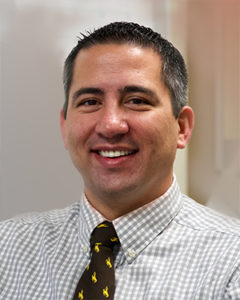
Nicholas Lamp
Cheyene Central High School
Cheyenne, WY
Grades: 9–12
Students: 1,289
Region: Urban
As a principal, it is important to cherish and celebrate student achievements in all capacities. I recently had a conversation with a young man who is set to graduate at the end of this school year. We reminisced on his growth since his freshman year when he was frequently sent to my office. Over the last four years, our conversations have evolved from appropriate classroom behaviors to discussing his future. Upon graduation, this young man will be joining the cybersecurity division of the Air Force. This student is a great reminder that success isn’t always about school achievements or test scores, sometimes it can be as simple as seeing the maturity and growth in students. It has been humbling to witness this young man overcome challenges as a freshman and grow to become one of America’s protectors.
